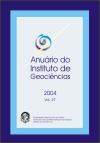Crocodylomorph ungual phalanxes from Bauru Basin (Late Cretaceous, Brazil)
DOI:
https://doi.org/10.11137/2004_0_53-63Abstract
The ungual phalanxes of recent crocodylomorphs are modified into queratin covered claws. They are conical, ventrally curved with a sharp distal end. They are used during locomotion, digging and female sizing on copula. Nevertheless, fossil crocodylomorphs claws present a wider morphological and functional diversity. It was analysed fossil claws from the Late Cretaceous rocks of Adamantina (General Salgado County) and Marília (Uberaba County) Formations of the Bauru Basin. The claws found in the Adamantina Formation were associated with skeletal remains of a baurusuchid. They are laterally compressed, more ventrally curved and stronger than those of recent crocodylomorphs. They also present, at their base, many furrows related to muscle attachment. The claws found in the Marília Formation were associated to the remains of a peirosaurid. They show a great lateral compression and a blade-like ventral edge. They also present a slight ventral curvature and strong furrows in their base for muscle attachment. The morphological data obtained from these claws allow the investigation of the autoecology of these Cretaceous crocodylomorphs.Downloads
Download data is not yet available.
Downloads
Published
2004-01-01
How to Cite
Vasconcellos, F. M. de (2004) “Crocodylomorph ungual phalanxes from Bauru Basin (Late Cretaceous, Brazil)”, Anuário do Instituto de Geociências. Rio de Janeiro, BR, 27, pp. 53–63. doi: 10.11137/2004_0_53-63.
Issue
Section
Article
License
This journal is licensed under a Creative Commons — Attribution 4.0 International — CC BY 4.0, which permits use, distribution and reproduction in any medium, provided the original work is properly cited.















